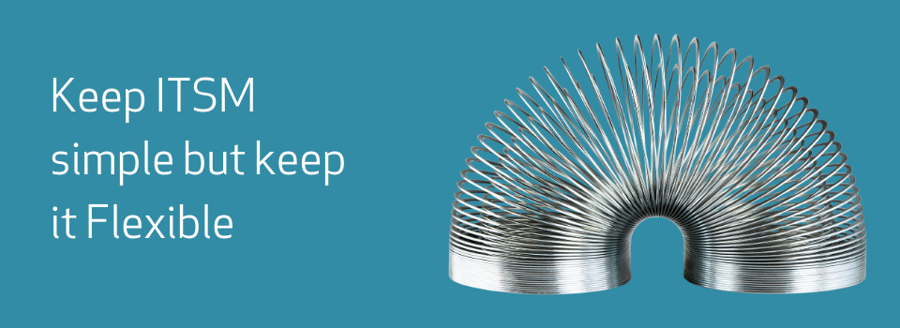Within Sunrise itself, it is fair to say that, while the fundamental concept of its ITSM software – that of being a framework-based, flexible solution, rather than a hard-coded product – has remained the same from day one, the actual need to utilise these capabilities have only more recently become a critical requirement.
Keep ITSM Simple
As with many other elements of ITSM strategy, the iterations of the various ITIL versions over time have demanded change, the result being that the ITSM user template itself has matured enormously over the years and is – necessarily – far more user friendly and comprehensive than before. It has also been expanded to reflect the different roles such a platform can play within a company, again in line with ITIL‘s own advancement. So, there are actually three different flavours of the Sunrise “template” : ITSM, MSP/services and HR, where the solution becomes a true ESM platform. While the underlying elements are shared, with access based around HTML5, whether accessed via the self-service portal – see later – or the main user interface, in each case the template has been adapted to reflect the specific requirements of each user type.
That concept, however, is even broader than it first appears. For example, the MSP template is not purely designed for an independent service provider – though of course many see benefit, such as Concorde Technology Group – but equally any organisation that effectively delivers services to and manages a number of underlying clients. For example, elements of the NHS are a perfect example of this, as is the public sector in general, such as local councils, or a multi-tenanted building being delivered services from a single suppler. Obviously, even within a given “flavour” of template, not every customer will require the same features or at least will not have the same level of prioritisation of said features, so flexibility – as ever – is the key here. So, while the Sunrise solution is sold as that – a complete solution – it is effectively modular in design, so a customer can quickly and easily focus on the key areas for them.
This flexibility is also evident in the way the solution – while providing comprehensive support of the ITIL guidelines – also adds value beyond ITIL compliance. Areas such as Project Management, Task Management and IT governance through risk control and audits showcase this extension of ITL-compliance capability. Otherwise it is all about maintaining the balance between flexibility and ease of use. This means being able to drive as much as possible from a central dashboard, simplifying interaction by using drag and drop techniques, for example, in order to minimise training requirements and human error. At the same time, those dashboards – as the primary user interface – need to be fully configurable as every user ideally wants a view that relates directly to their job role and most relevant processes. Not only is it important to provide a user with an interface that relates to their needs, but also one that is optimised for the device they are using, so a mobile interface should look like an app, for example.
Ultimately, it’s about giving the customer as much choice as possible while – at the same time – guiding them as accurately and efficiently as possible, not least in order to avoid the aforementioned human error elements. This is especially applicable to the self-service portal – increasingly the most popular method of reporting an incident. All dashboards – again – are configurable using drag and drop techniques and are intended to allow them to be as relevant as possible to each individual. The idea is that users are now familiar with self-service techniques, such as when interacting with their energy and utility service providers, so a work interface should be no different. This is a far cry from enterprise software in the past, where the vendor dictated how its product must be used. That approach is no longer acceptable. Flexibility is the new normal!




.png)
